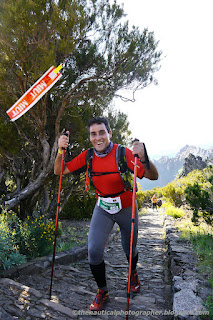I was thinking about buying an automatic watch for quite some time. With a few analog quartz watches already and some digital ones with various applications, I, curiously, decided to take the plunge and buy a classic one, because, as a fellow seaman once said to me, they are very interesting machines.
However the most famous and reliable automatic mechanisms are from Switzerland and, together with fame and precision?!, they always bring attached a nice price tag. At the other end of the spectrum lie a few oriental watchmakers, but not a single one of them (except the more expensive Citizen and Seiko) with unanimous favourable opinion among users.
Refusing myself to pay more than one or two hundred dollars for a watch, I excluded, for obvious reasons, the Swiss ones... normally starting at ten times that price. So, for now, and while I'm waiting to win the jackpot, I forget the Rolexes, the Omegas, the IWC's and even the (comparatively) modest Tissots. For the moment, I just keep as my only official import from Switzerland the chocolates. So, after (quickly) forgetting any dreams of grandeur I started to do some research on the net for the right product, among a few obscure, but nevertheless (so I thought) trustworthy, European watchmakers.
For starters, I had a general concept of my ideal machine:
1. Not more than 150 Euros.
2. Automatic movement.
3. Gold plated (I know it sounds kitsch, but I have already a few stainless steel watches).
4. Large case (bigger than 40mm in diameter).
5. Water resistant.
6. Visible mechanism on the back and also forward.
7. A few complications (just to look nice!).
8. Leather strap, and... lastly...
9. ... a precise mechanism.
You probably think that the search was easy. And, in a way, it was. I forgot the E-Bay market for starters. I know, I don't really have any formal complains about E-Bay. In fact, I've bought over the years many items with them. Mostly Chinese photographic accessories. And not even once E-Bay failed me. However, I decided to buy my watch from Amazon. But since I'm a European citizen, I immediately forgot Amazon.com and choose instead the UK branch. That way, within the European Union, I had automatically the tax problem solved.
So, I started the search. And eventually that led me to the Perigáum 1972 watchmakers.
About whom I didn't know anything. A quick search on the web led me to their website (
http://www.perigaum.com/). However, although elegant and formal, the website is short on words. Witch is a shame, because with a better information they'll get (I suppose) more clients.
However, between the lines, I have manage to understand that the company is German and it was founded in 1972 (no sure about this, tho... could be the door number). However, there are a few interesting models by this watchmaker on the web and the prices are also interesting, lying around the numbers I was pointing at.
The very positive reviews I was reading were enough for me to take a leap of faith and so I decided myself for a watch of this brand. The fact is that Perigáum has a few models that go well over the one-thousand Euro mark. And at that level a watchmaker must know what he is doing, because the competition is already fierce. There are several "classic" brands with products in that price tag. So, to compete at those prices with well established brands Perigáum has to duel with the same weapons. As I've told you, I didn't wanna so much. My only hope is that they apply the same engineering standards to their lower-level models. The ones I was targeting.
Finally, I've decided myself for the Perigáum 1972 Monaco Automatic P-0505-GS.
The Amazon professionalism was, as usual, perfect. The order was placed at 01:44 of the past 30th of May on their website (the seller store was Watch-Shop) and yesterday (first of June), around 16:00, the UPS courier was calling me with the package. From UK to Madeira: about 62 hours. Not bad.
Now... about that watch.
Well, it's nice. Don't be expecting something that it's not. But for 98.62 £ (package included), I guess I got a little bit more than what I've payed for.
Pictures please:
The watch comes in this nice black case with the User's manual/Warranty certificate. All this protected with a white cardboard box with the Perigáum logo on the cover.
The watch itself is somewhat elegant, without being flashy. The crown is not screw-in. And it serves two purposes: when completely closed, and if you need to start the mechanism, just turn it gently, clockwise, five or six times to acquire a little reserve power. Then you just need to slightly shake the watch to start the movement. If you pull it out one (and only) step, it works as a regular time setting.
There are two additional buttons on the right side. The upper button sets the date (by mere pushes) and the lower one sets the month (by the same procedure). The blue ink you see on the crown is, I think, a production mark. It's easily clean.
The case see-through back, with the mechanism visible by means of a mineral crystal window.
The black leather strap, with the Perigáum logo and the words "genuine leather". This might not mean a thing. However using genuine leather in such an inexpensive watch is, to me, a watchmakers commitment on quality. They could easily have gone for any synthetic product.
Another front view of the watch in review. The open balance spring gives the watch it's elegant touch. The dial is in black colour and, besides the hour, minute and second hands, you'll find on it the day of the week (on the left) and the month (on the right). On top, under the roman numeral XII, you'll find the date window (in Arabic numbers). Just don't expect that these hour and minute hands are easily seen at night time. Contrary to my Citizen Divers that almost hurt my eyes in deep night, the fluorescence of these two hands is kinda week. Anyway, this is mostly a "urban" watch. So the designers probably thought that we are going to use it in well lit places. Somehow I have the feeling that they were correct.
The watch case, in nice golden colour, with a third button, almost hidden. You can use any pointed tool to (carefully) push it. And it serves the purpose of setting the weekday.
At the end of this review, there are a few questions that remain to be answered. For instance: will the golden colour survive the test of time? Or is it going to wear out and show, sooner or latter, the stainless steel underneath, like so many cheap Rolex and Omega imitations from the Far-East? How accurate is this automatic mechanism and where is it from? The most expensive automatic Perigáums clearly state "Swiss made" on their dials, regarding their origin. Is this a Japanese automatic movement? If so, it was not a bad approach, since many of them, judging by the many positive opinions worldwide, are more accurate than the Swiss ones. Dear gents at Perigáum, we, your clients, would love to know the answers to these questions.
Meanwhile, while we wait, I'll try to find the answers to some of them myself.






























